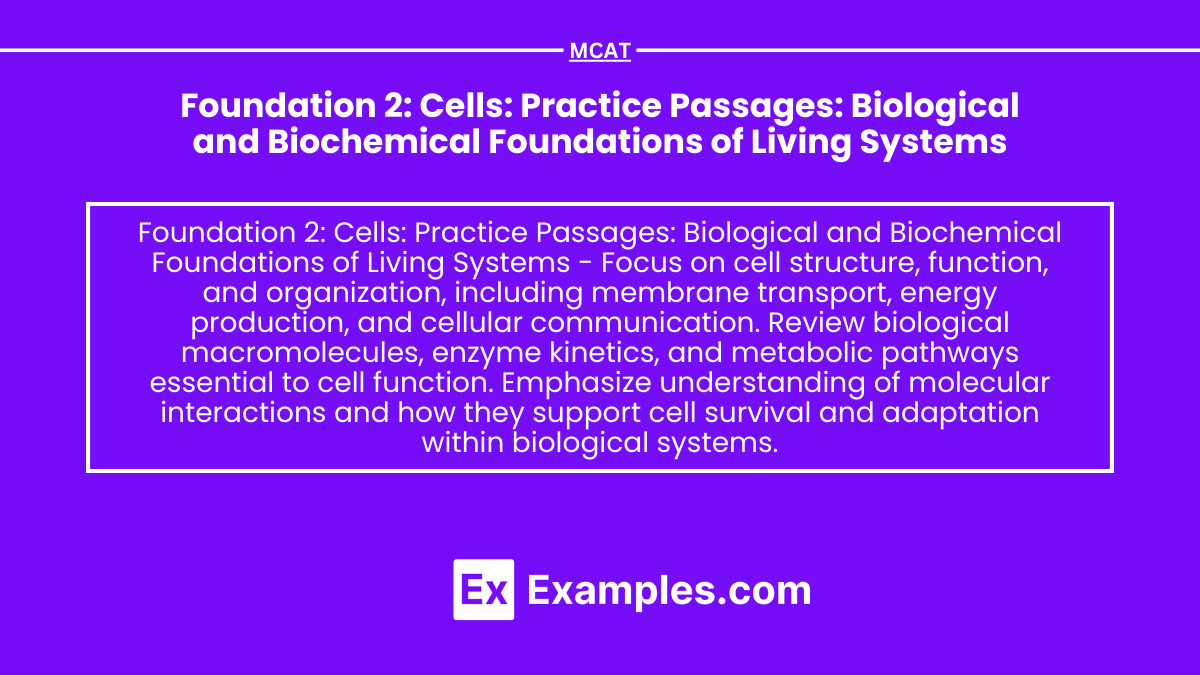The MCAT’s Foundation 2: Cells section within the Biological and Biochemical Foundations of Living Systems focuses on cellular structures, functions, and biochemical processes essential for life. This section tests knowledge on cell transport, organelles, enzyme kinetics, metabolism, cell signaling, and cell division, requiring integration of biological concepts with data analysis, essential for achieving a high score.
Learning Objectives
In studying “Foundation 2: Cells: Biological and Biochemical Foundations of Living Systems” for the MCAT, you should learn to identify the structure and function of cells, including organelles, membrane transport, and cell signaling. Analyze key biochemical pathways such as cellular respiration, metabolism, and energy production. Understand the processes of cell growth, reproduction, and differentiation, including mitosis and meiosis. Evaluate how cells interact with their environment, adapt to changes, and maintain homeostasis. Additionally, explore how molecular biology and genetics contribute to cell function and disease, using practice passages to apply these concepts to MCAT-style questions.
1. Cellular Structures and Functions
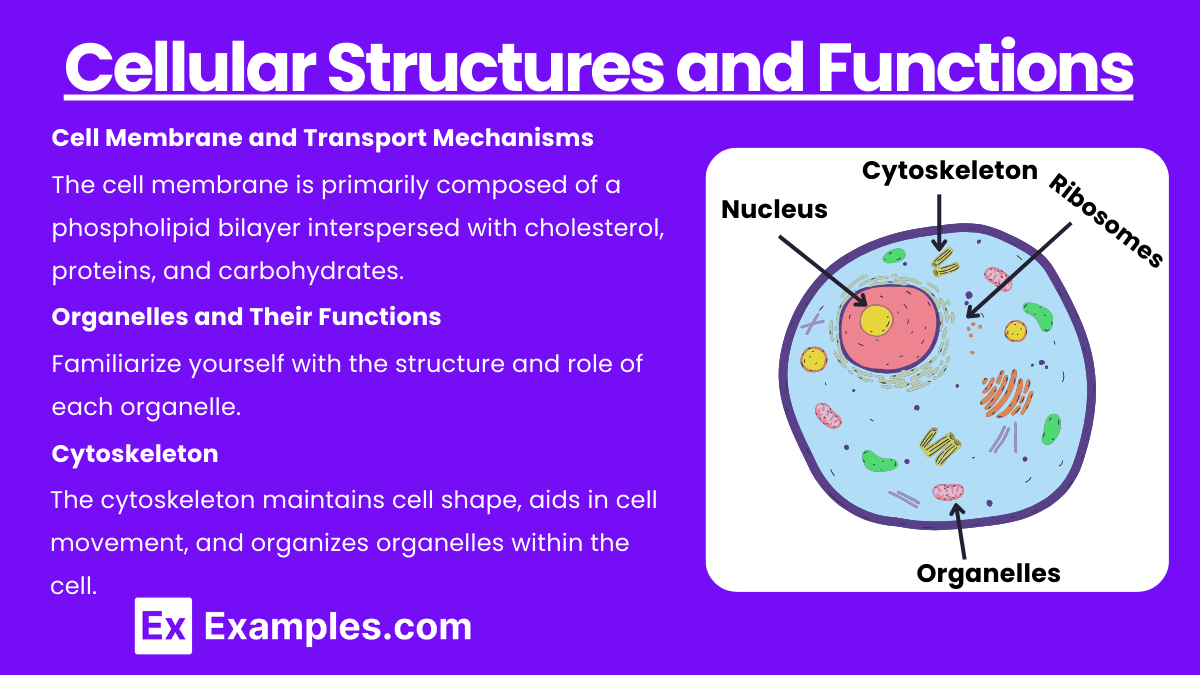
- Cell Membrane and Transport Mechanisms:
- The cell membrane is primarily composed of a phospholipid bilayer interspersed with cholesterol, proteins, and carbohydrates. Understanding the fluid mosaic model is crucial for recognizing how molecules and ions move across the membrane.
- Transport Types:
- Passive Transport includes simple diffusion and facilitated diffusion through protein channels for small or polar molecules.
- Active Transport involves ATP-driven pumps (e.g., the sodium-potassium pump) moving molecules against their concentration gradient.
- Bulk Transport includes endocytosis (phagocytosis, pinocytosis) and exocytosis for larger molecules.
- Organelles and Their Functions:
- Familiarize yourself with the structure and role of each organelle. For example, mitochondria are the powerhouse of the cell, carrying out oxidative phosphorylation, while the Golgi apparatus modifies, sorts, and packages proteins.
- Cytoskeleton:
- The cytoskeleton maintains cell shape, aids in cell movement, and organizes organelles within the cell. Key components include:
- Microfilaments (actin filaments) involved in cell movement and cytokinesis.
- Intermediate Filaments that provide tensile strength.
- Microtubules involved in vesicle transport, cilia/flagella structure, and chromosome movement during cell division.
- The cytoskeleton maintains cell shape, aids in cell movement, and organizes organelles within the cell. Key components include:
2. Biological Macromolecules and Enzyme Kinetics
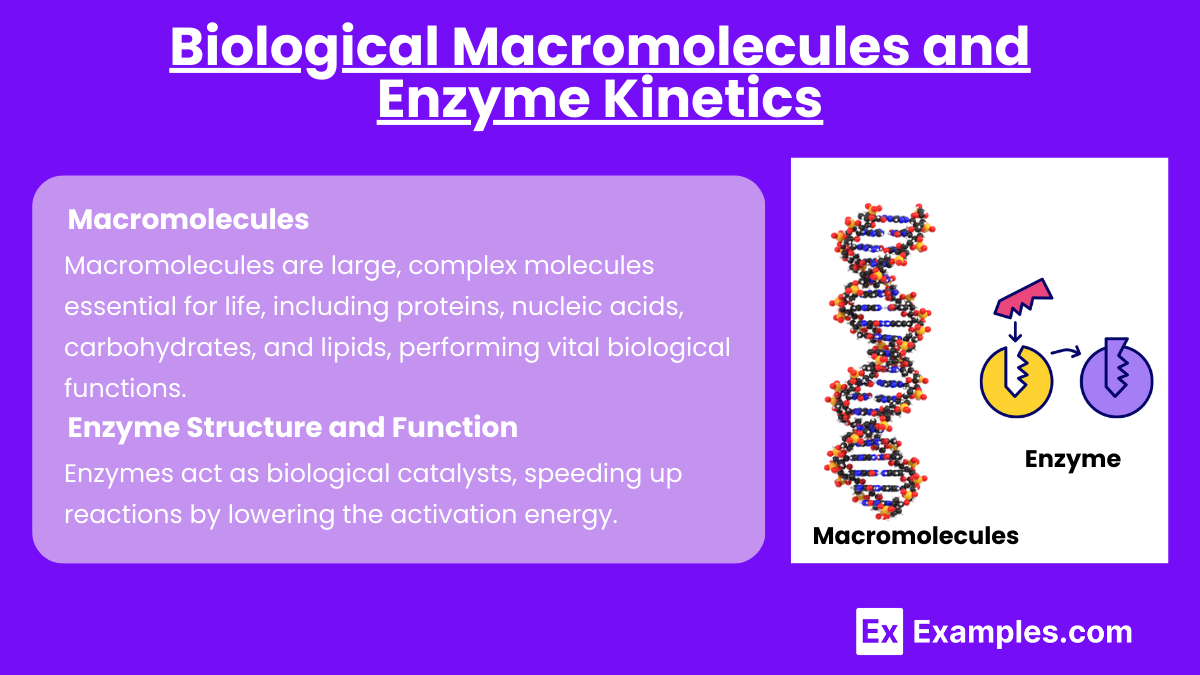
- Macromolecules:
- Know the structure and function of the four major macromolecules:
- Proteins: Composed of amino acids; function as enzymes, structural components, signaling molecules, etc.
- Nucleic Acids: DNA and RNA store and transmit genetic information.
- Lipids: Key components of membranes; also function as signaling molecules.
- Carbohydrates: Serve as energy sources and structural components.
- Know the structure and function of the four major macromolecules:
- Enzyme Structure and Function:
- Enzymes act as biological catalysts, speeding up reactions by lowering the activation energy.
- Enzyme Kinetics: Master the Michaelis-Menten equation and understand the significance of Km (substrate concentration at half-maximal velocity) and Vmax (maximum reaction rate).
- Regulation: Enzymes are regulated by inhibitors (competitive, non-competitive, uncompetitive), and by allosteric regulation and covalent modifications.
3. Metabolism and Bioenergetics
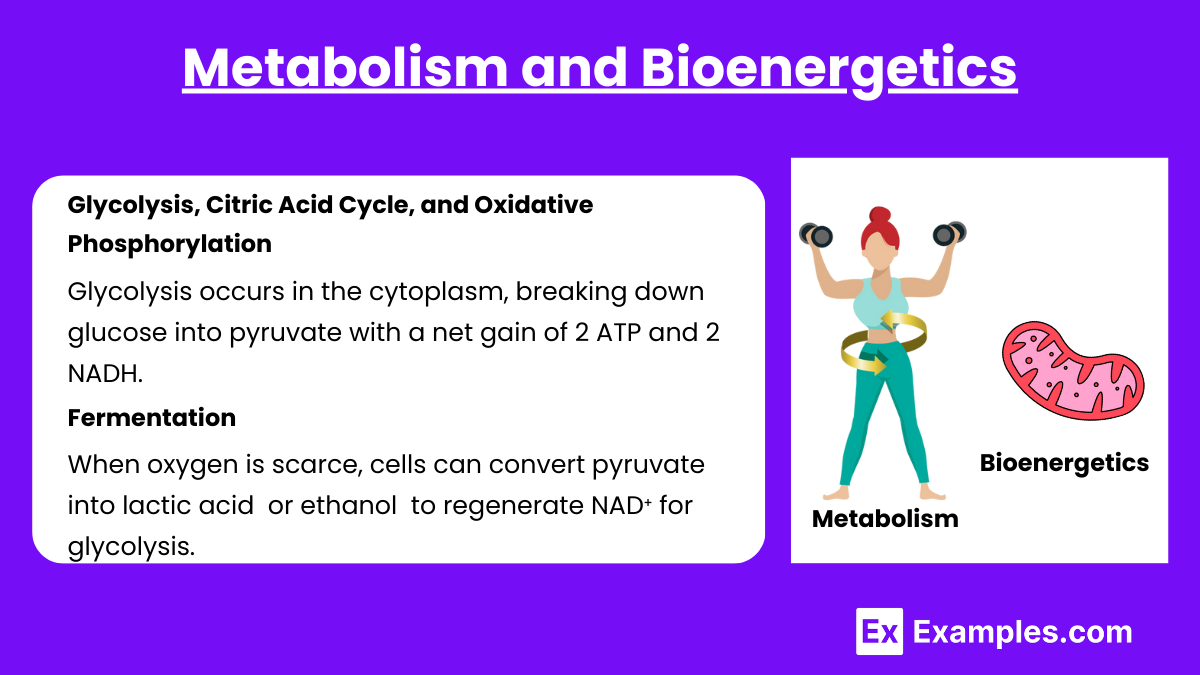
- Glycolysis, Citric Acid Cycle, and Oxidative Phosphorylation:
- Glycolysis occurs in the cytoplasm, breaking down glucose into pyruvate with a net gain of 2 ATP and 2 NADH.
- The Citric Acid Cycle (Krebs cycle) occurs in the mitochondrial matrix, producing NADH, FADH₂, and GTP/ATP.
- Oxidative Phosphorylation involves the electron transport chain and chemiosmosis. Understand the flow of electrons, the role of oxygen, and the production of ATP.
- Fermentation: When oxygen is scarce, cells can convert pyruvate into lactic acid (muscle cells) or ethanol (yeast cells) to regenerate NAD⁺ for glycolysis.
- Photosynthesis: Though less emphasized, understand the basic steps of the light-dependent and light-independent reactions in plants.
4. Cell Communication and Signal Transduction
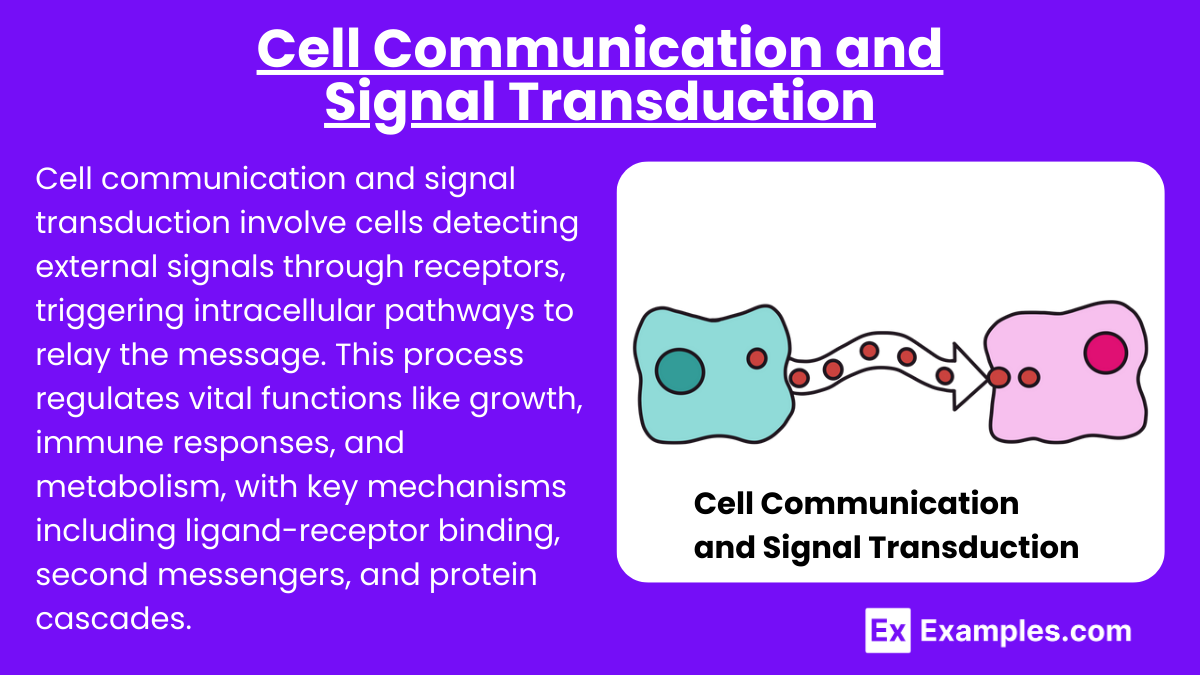
- Types of Cell Signaling:
- Paracrine, autocrine, juxtacrine, and endocrine signaling define the distance and method through which signals are sent.
- Receptor Types:
- G-protein coupled receptors (GPCRs), tyrosine kinase receptors, and ion channel-linked receptors each initiate specific signaling cascades.
- Signal Transduction Pathways:
- Know the major pathways like the cAMP pathway and MAP kinase pathway and their cellular effects.
- Second messengers like cyclic AMP (cAMP), inositol triphosphate (IP3), and Ca²⁺ play a role in amplifying signals within the cell.
5. Cell Cycle and Division
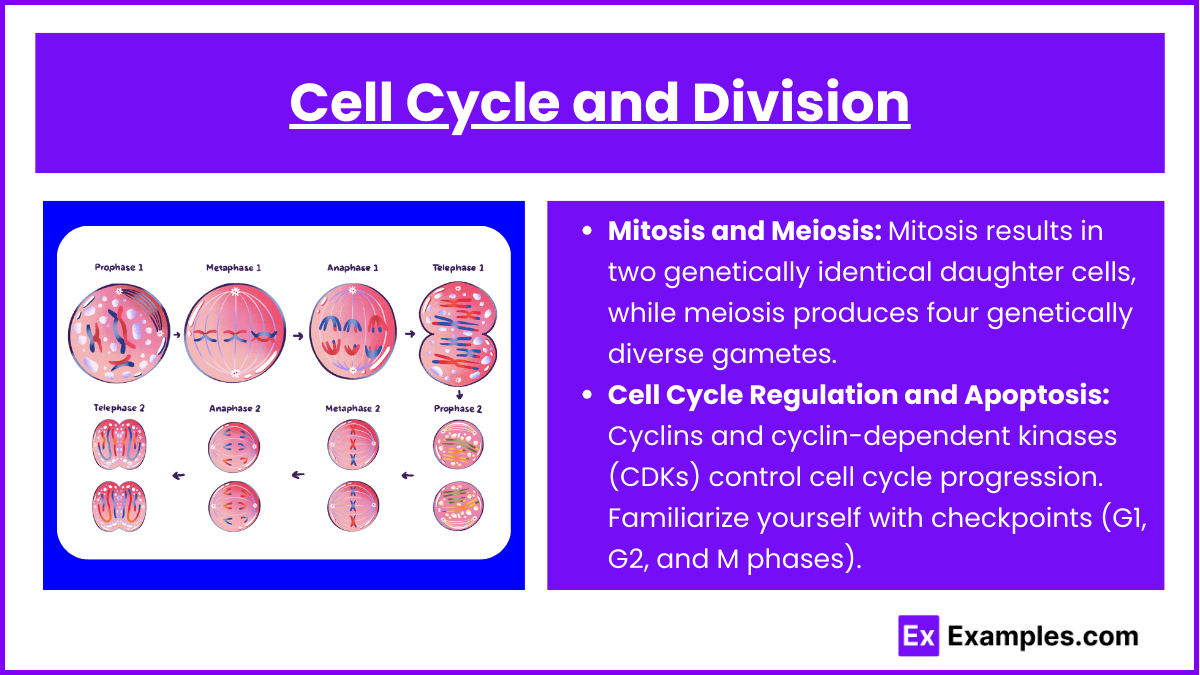
- Mitosis and Meiosis:
- Mitosis results in two genetically identical daughter cells, while meiosis produces four genetically diverse gametes.
- Understanding each phase (prophase, metaphase, anaphase, telophase) is critical for both mitosis and meiosis.
- Cell Cycle Regulation and Apoptosis:
- Cyclins and cyclin-dependent kinases (CDKs) control cell cycle progression. Familiarize yourself with checkpoints (G1, G2, and M phases).
- Apoptosis, or programmed cell death, is essential for removing damaged cells, with key roles played by caspases and the mitochondrial pathway.
Examples
Example 1: Cell Membrane Permeability and Drug Transport
A study investigates how varying lipid compositions affect drug permeability through cell membranes. This passage would test understanding of passive and active transport, membrane structure, and how membrane composition influences molecule diffusion.
Example 2: Enzyme Activity under Different pH Conditions
Researchers examine how pH variations alter enzyme activity in cells. The passage focuses on enzyme kinetics, how pH affects enzyme structure and function, and the role of optimal pH for enzymatic efficiency.
Example 3: Role of Mitochondria in Apoptosis
Scientists analyze how mitochondrial disruption triggers apoptosis in cancer cells. This passage explores mitochondrial function, the role of cytochrome c release, and cellular mechanisms of programmed cell death in disease contexts.
Example 4: G-Protein Coupled Receptor Signaling Pathways
A passage discusses GPCR signaling and its influence on cell responses to external signals. It examines receptor activation, signal amplification via second messengers like cAMP, and how these pathways regulate cellular activities.
Example 5: Cell Cycle Checkpoints in DNA Damage Response
Research investigates the impact of DNA damage on cell cycle checkpoints. The passage explores how the cell cycle is regulated, the role of checkpoints in preventing mutation propagation, and responses like cell cycle arrest.
Practice Questions
Question 1:
Which of the following describes the primary function of the Golgi apparatus in a cell?
A) Synthesizing proteins
B) Modifying and packaging proteins
C) Producing ATP
D) Degrading cellular waste
Answer: B) Modifying and packaging proteins
Explanation:
The Golgi apparatus modifies, sorts, and packages proteins and lipids for transport to their destinations, such as the cell membrane or lysosomes.
Question 2:
Which structure is responsible for regulating the selective permeability of the cell membrane?
A) Nucleus
B) Ribosomes
C) Phospholipid bilayer
D) Mitochondria
Answer: C) Phospholipid bilayer
Explanation:
The phospholipid bilayer, with embedded proteins, selectively controls molecule entry and exit, maintaining cellular homeostasis and responding to environmental changes.
Question 3:
What effect does an increase in pH above an enzyme’s optimal level typically have on its activity?
A) Increases activity
B) Decreases activity
C) No change in activity
D) Denatures the enzyme
Answer: B) Decreases activity
Explanation:
Enzymes have optimal pH levels; deviations can reduce activity by altering the enzyme’s shape, affecting substrate binding and catalytic efficiency.

